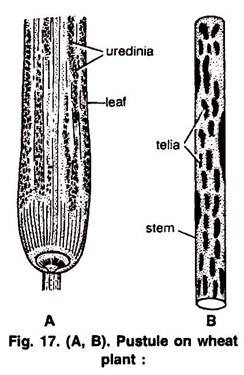In this article we will discuss about the fate and functions of nitrogenous and non-nitrogenous parts of amino acid molecule.
1. Fate and Functions of the Nitrogenous Part:
The nitrogenous part, viz., ammonia, undergoes the following fate:
i. Formation of Urea:
Most of the ammonia, under normal conditions, is converted into urea. [Because about 80% of total urinary nitrogen is found in the form of urea.] Urea is formed mainly in the liver.
The chief chemical process of urea formation is as follows:
Ornithine Cycle (Krebs-Henseleit Cycle):
According to Krebs and Henseleit, the basic process of urea formation is as follows: The amino acid arginine is broken down by the enzyme arginase (found in the liver) into urea and ornithine. Ornithine unites with one molecule of ammonia and carbon dioxide to produce citrulline. The latter combines with another molecule of ammonia to form arginine. Arginine again breaks down into urea and ornithine. Thus the cycle repeats, and at each cycle, one molecule of urea is formed. (Fig. 10.35).
This theory is supported by the following main observations:
i. Arginase is present in the liver of all vertebrates (ureotelic animals) which excrete urea and only traces in the kidneys.
ii. Birds which normally excrete uric acid (uricotelic animals) and not urea do not possess arginase in the liver.
iii. Perfusion of liver slices with a suitable fluid containing arginine, ornithine, etc., readily forms urea.
iv. Observations with isotonic carbon —radioactive 14C-labelled and nitrogen 15N-labelled—in which CO2, NH3, arginine, etc., were used—also support this theory.
Recent observations regarding the details of the ornithine cycle are as follows:
CO2 is activated into active CO2 in presence of biotin, N-acetyl glutamic acid and ATP. This active CO2 reacts with ammonia donated from glutamine to form carbamyl phosphate. In the later stage also participation of both N-acetyl glutamate and ATP are necessary. Both steps are catalysed by the enzyme carbamyl phosphate synthetase.
The formed carbamyl phosphate reacts with ornithine in presence of the liver enzyme ornithine transcarbamylase (ornithine carbamyl transferase) to form citrulline (carbamyl ornithine). Citrulline then condenses with aspartic acid in presence of ATP and Mg++ to form arginosuccinate (argininosuccinate).
This reaction is catalysed by a condensing enzyme, arginosuccinate synthetase. Arginosuccinate then splits off into fumaric acid and arginine, influenced by the enzyme arginine synthetase (arginine succinase). In the liver, if arginine is not used for protein synthesis, then arginine is broken down by the enzyme, arginase, to form urea and ornithine. The liberated fumaric acid is converted into oxaloacetic acid in the tricarboxylic acid (TCA) cycle. Oxaloacetic acid is then transaminated into aspartic acid by the enzyme transaminase. The NH3 is donated by glutamic acid or glutamine (Figs 10.36, 10.37, 10.42).
i. Formation of Ammonium Salts:
A small part of ammonia combines with acids, other than carbonic acid, and appears in the urine in the form of ammonium salts, such as ammonium phosphate, sulphate, urate, etc. It is obvious therefore that, the amount of ammonium salts formed will not depend upon the amount of ammonia formation but on the relative proportion of acids and bases in the body. In acidosis more ammonia is needed to neutralize the excess acids, and so there will be proportionate increase in the amount of ammonium salts. In alkalosis opposite changes occur.
The function served by the formation of ammonium salts is to neutralise acid of the body, so that the blood reaction may remain constant.
ii. Ammonia may be utilized for the Synthesis of Simple Amino Acids:
Such as glycine, alanine etc., and also for amination of glutamic acid to give glutamine.
iii. It may also be used for the Synthesis of Various Nitrogenous Substances:
Such as creatine, purine, uric acid, pyrimidine, lecithin and such others.
2. Fate and Functions of the Non-Nitrogenous Part:
The non-nitrogenous part has the following fate:
i. Some will have the Fate of Carbohydrates:
The non-nitrogenous residues of some amino acids are utilized in the body as carbohydrates. Because, when given to a diabetic animal (depancreatised or after administration of phloridzin), these amino acids increase a corresponding amount of sugar in the urine. For this reason, in a diabetic subject about 60% of food protein is converted into sugar.
Glycine, alanine, aspartic acid, glutamic acid, serine, cysteine, arginine, proline, hydroxyproline, histidine, lysine, isoleucine, citrulline, methionine, valine, threonine, partially phenylalanine and tyrosine belong to this class. These amino acids are called antiketogenic amino acids. Because, they are as carbohydrates in the body and prevent the formation of ketone bodies. They are also called glucogenic.
ii. Some Undergo the Fate of Fats:
There are certain amino acids, viz., leucine and in part isoleucine, phenylalanine and tyrosine, which yield no glucose, but give rise to ketone bodies when administered to a diabetic animal. It is obvious that the non-nitrogenous part of these amino acids is broken down in the body as fatty acids, from which the ketone bodies are formed. It is known that in a diabetic subject about 40% of proteins are converted into ketone bodies. These amino acids are therefore known as ketogenic amino acids.
iii. The Sulphur and Phosphorus:
The sulphur and phosphorus, derived from the non-nitrogenous part of the amino acids, are converted into various sulphur and phosphorus compounds and are excreted as such.




